Arthrodesis of length stable proximal articular fractures of the 1st–4th metatarsal
1. General considerations
If fragmentation is such that the joint cannot be reconstructed, the options are:
- Nonoperative treatment
- Primary fusion
None of these options are ideal.
The results may be unsatisfactory because of the fracture’s intraarticular nature, and the patient may complain of pain and stiffness.
As fusion is permanent, the decision to perform fusion should be considered for only significantly damaged articular surfaces.
Soft-tissue injury
These fractures can have a severe associated soft-tissue injury.
Hardware selection
The fixation can be ensured using lag screws, staples, or a plate.
Typically, lag screws and staples are used when the construct is length stable and compression is possible.
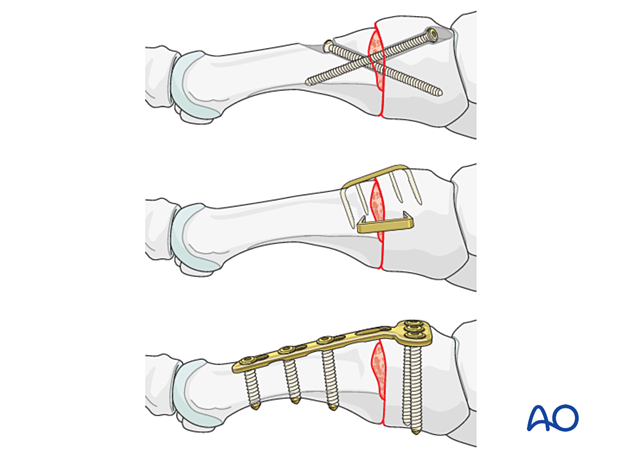
Plates are an acceptable alternative to lag screws but result in more prominent hardware. A dorsal plate is less prominent than a medially placed plate (first metatarsal).

2. Temporizing measures
Medial and lateral external fixation (with a distractor device to restore columnar length) may be applied as soon as possible to stabilize the foot and decrease further injury to the soft tissues.
Percutaneous K-wires can be used to reduce displaced fragments and left as temporary fixation.
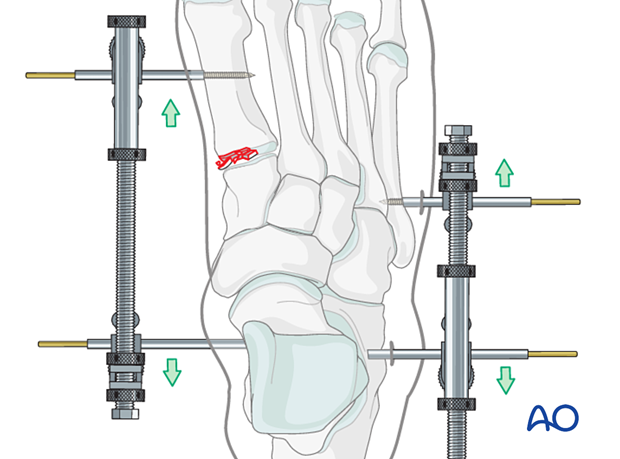
3. Approach
Selection of approach
Fractures of the first metatarsal can be approached through a medial or a dorsal approach:
Any single metatarsal injury in metatarsals 2–3 can be approached through the following dorsal approach:
- Dorsal approach to single metatarsals 2–4
- Dorsal approach to multiple metatarsals (when several metatarsals are injured).
Visualization
A medial-column distractor may be used to restore the length of the medial column.
If the medial distraction creates an abduction deformity, applying a lateral distractor may help minimize the angulation.
It is helpful to have comparative x-rays from the uninjured side, allowing proper length and morphology to be judged.
The proximal pin is inserted into the neck of the talus through a stab incision. Image intensification can be used to ensure correct pin placement outside the articular surfaces. The correct insertion point is often located 1–2 cm posterior to the navicular tubercle.
The distal pin is inserted in the first metatarsal.

4. Irrigation and debridement
Irrigate the fracture site using a syringe.

Displaced fracture fragments are debrided and mobilized with a dental pick or Freer elevator.
Once adequate visualization has been achieved and the joint thoroughly irrigated, examine the extent of articular surface involvement to validate the preoperative plan of primary fusion versus ORIF.
If joint fragmentation is not extensive and tarsometatarsal instability is absent, it may be possible to perform fixation.
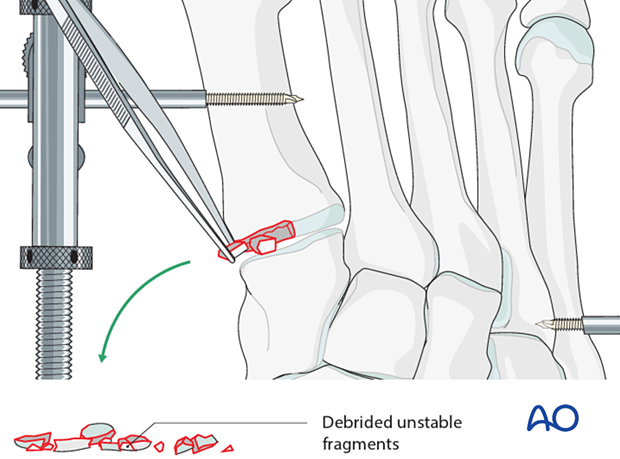
5. Preparation of joint for fusion
Preparation of joint for fusion
Remove the cartilage on both sides using a curette.
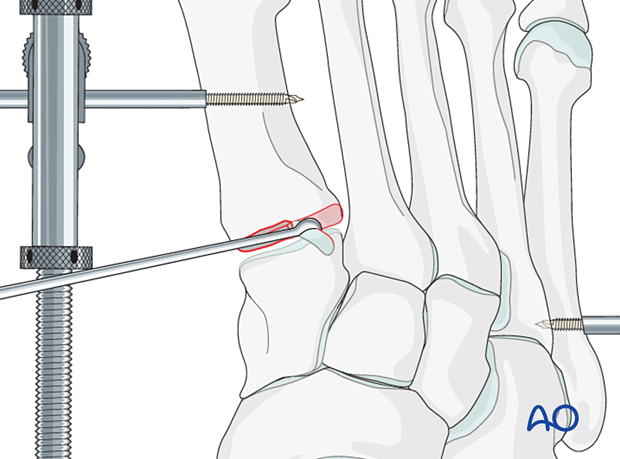
Penetrate the subchondral bone using a high-speed burr to promote bone growth.
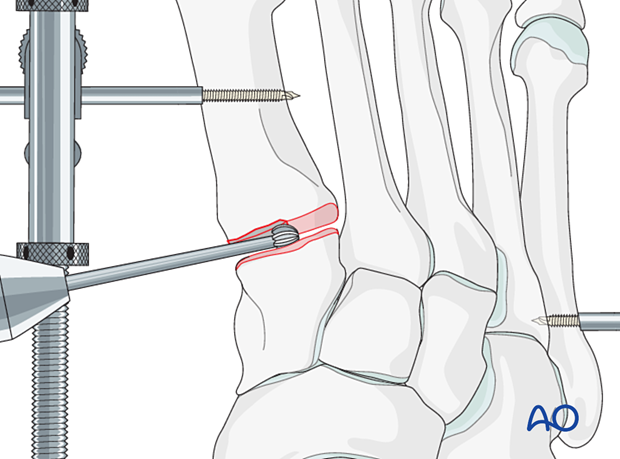
The application of bone graft, allograft, or bone substitute may be required to fill a small gap in such a length-stable situation.

6. Temporary fixation
Compress the arthrodesis site and secure the compression with K-wires.
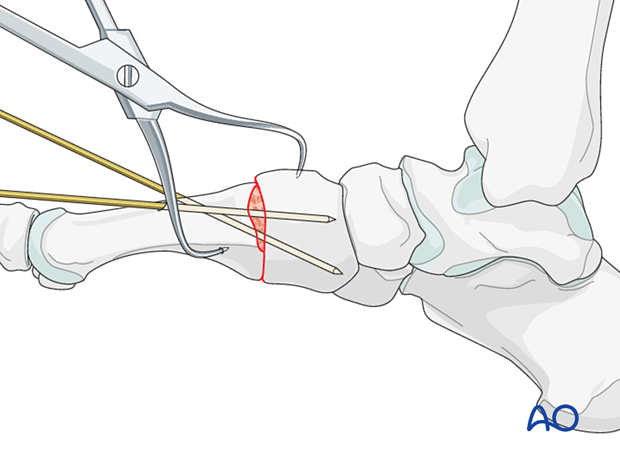
7. Lag screw fixation
Fixation
Ideally, two 3.5 lag screws are inserted. One comes from the distodorsal to proximal plantar. One comes from proximal dorsal to distal plantar.
It is often difficult to insert more than one screw in the 2nd and 3rd metatarsal.
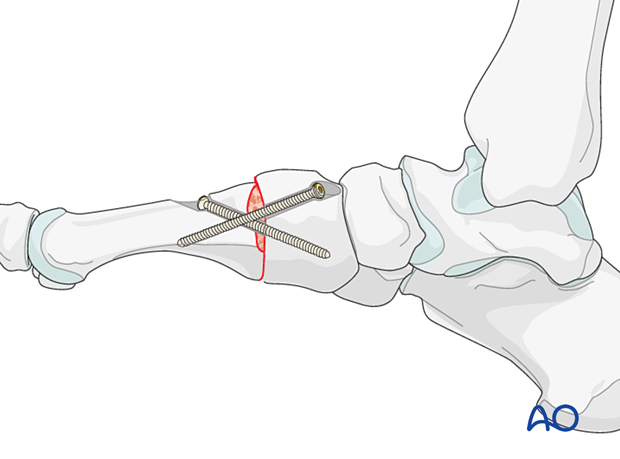
Countersinking
Countersink the glide hole to reduce screw prominence.
The metatarsal base requires significant bone removal to allow for proper screw insertion. In this case, a high-speed burr is recommended.
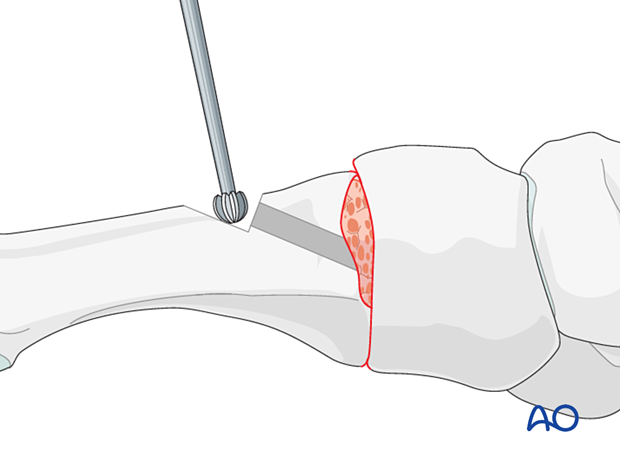
The screws should fully engage the bone proximally but should not be prominent at the plantar surface of the cuneiform as this may cause pain.

8. Staple fixation
Staple placement
For the first metatarsal, insert one staple medially and one dorsally.
Due to lack of space, one staple is frequently used for the second and third TMT joints.
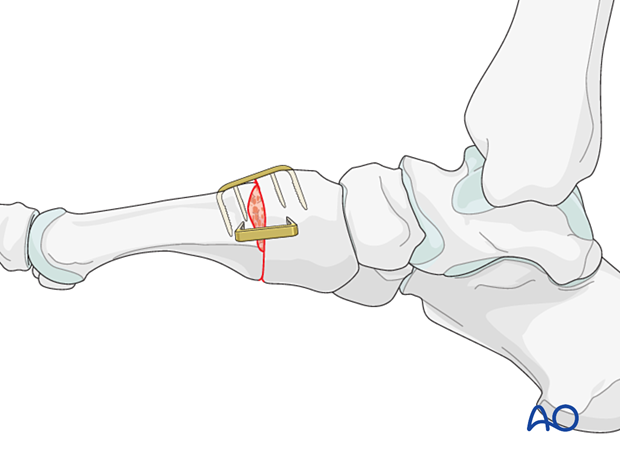
Drilling
Use the manufacturer's drill guide to prepare a hole on each side of the arthrodesis site. The depth of the hole should correspond to the length of the staple legs.
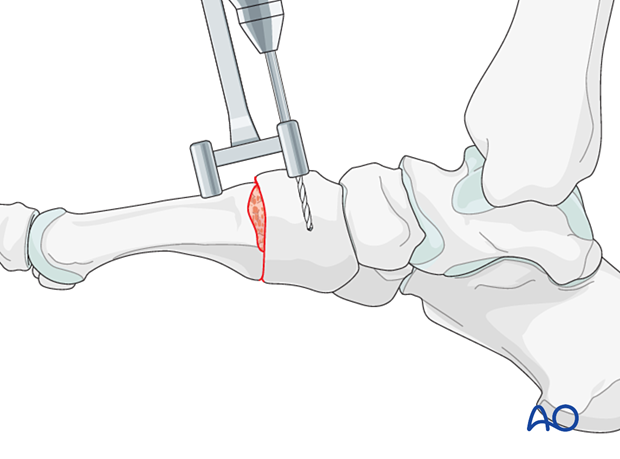
Staple insertion
Use the manufacturer's device to align the tips of the implant legs parallel with the drill holes and insert the staple.
Use an appropriate tamp to seat the staple fully.
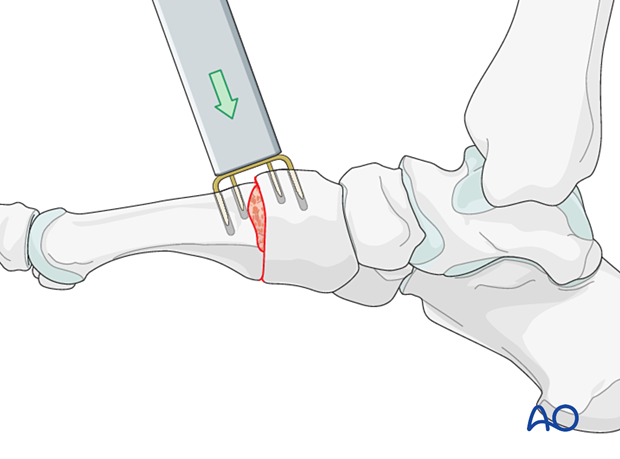
9. Compression plating
Compression plate fixation
Contour a T-plate to fit the bone surface.
A 3.5 mm plate can be used for the first TMT joint, allowing three-screw fixation in the distal and proximal segments.
For the second and third TMT joint, a 2.7 mm T-plate can be used, which allows for two screws in the proximal and three screws in the distal segment.
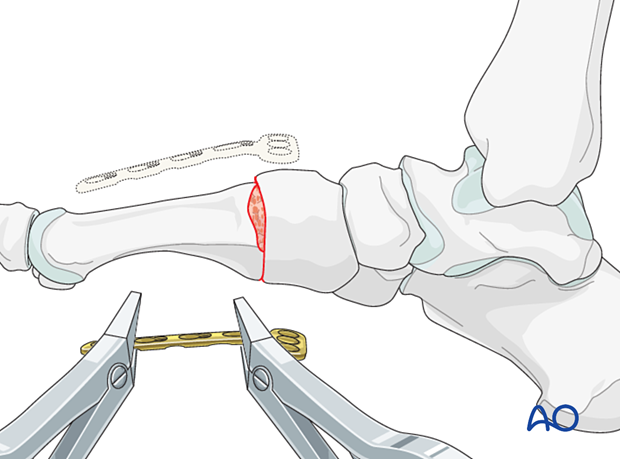
Insert screws in compression mode after appropriate length, alignment, and rotation have been verified.














